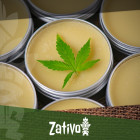Don't have an account?
Register NowYou have to add to cart at least 5 bottles or any program to make checkout.
- BlogEffects Of Marijuana On Physical Excercise
Effects Of Marijuana On Physical Excercise
Published: July 18th, 2017
Categories:
Cannabis Info
HOW CANNABINOIDS CAN BOOST YOUR PRE- AND POST-WORKOUT ROUTINE
Feeling uninspired about taking that rainy day run? It just so happens that consuming marijuana may contribute to a more focused and energized exercise routine. As the longstanding stigma against marijuana use subsides, a greater numbers of fitness lovers and professional athletes are coming forward in support of the substance. Increasingly, doctors and researchers are also discovering how marijuana can sustain positive effects on physical exercise and recovery.
EXERCISE MAKES YOU HIGH(ER)?
As recent research has indicated, cannabinoids and the human body are an interactive pair, mediated through the endocannabinoid system. Discovered by Dr. Raphael Mechoulam, cannabinoids like THC bind to receptors CB1 and CB2 in the central and peripheral nervous system. These interactions affect the way we feel physically and emotionally, influencing everything from memory to sex drive.
MARIJUANA AND RUNNER’S HIGH
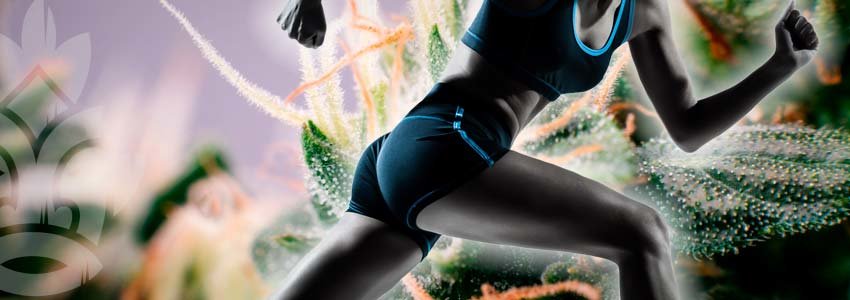
When we exercise, our bodies produce chemicals that influence outcomes similar to the ones we experience when smoking THC-rich cannabis. A common term in any long-distance runner’s vocabulary is the “runner’s high,” a feeling of physical and emotional euphoria experienced when the neurotransmitter dopamine is released. Dopamine is linked to the human reward center, which mediates feelings of pleasure. Adding marijuana to the mix, you may find your next runner’s high to be augmented even further in the presence of THC.
There are several notable benefits of cannabinoids for runners. Contrary to some belief, smoking cannabis can induce bronchodilator effects, decreasing respiratory resistance and allowing for the lungs to operate at max capacity. Since marijuana is known to help treat the symptoms of chronic pain, a CBD-rich strain can assist in reducing post-workout inflammation from pounding your feet against the pavement.
PHYSICAL EXERCISE AND THC
A fascinating study released by the University of Sydney found that cannabis users who exercised for 35 minutes after smoking had 15% higher levels of THC in their bloodstream than those who did not exercise. This is because THC is stored in human fat cells, which then metabolises when you exercise. The reason for the increased THC content is due to the release of THC from these fat cells back into the bloodstream as your body feels the burn of physical activity and engages in chemical processes like calorie burning.
SATIVA VS. INDICA

Just like food and protein shakes, certain types of marijuana are best consumed before working out, while others are best taken after. For the most part, sativa and sativa-dominant hybrid strains emit more energetic highs. Smoking these strains influences feelings of euphoria and therefore encourages confidence, allowing athletes to reach their max capacity and get deep into the zone.
On the contrary, after you’ve finished a long run, an intense rock climbing session, or you finally attempted that gravity defying gymnastics move, an indica is ideal to help you cool down and relax your muscles and your mind.
Many consumers enjoy hybrid strains as these create outcomes somewhere between the poles of a true indica or sativa. Especially if you feel that one or the other isn’t working as well as you had hoped, give hybrids a try to see if you can benefit from the strengths of each strain.
DIFFERENT CONSUMPTION METHODS

With the proliferation of a seemingly infinite number of cannabis products circulating the world over, there are now more options than ever before for sporty marijuana users. Combusting cannabis flower by smoking from a bong or joint may not be ideal for a heavily aerobic workout, whereas vaping and edibles don’t come with a harsh smoke.
In the case of edibles, keep in mind that the onset of effects occurs much later than when smoking. Smoking produces a near-immediate onset of outcomes felt within the first minutes that last for shorter periods. Eating edibles, on the other hand, can take up to an hour to activate and may “hit harder” than smoking smaller amounts of flower. Whatever your method, remember to use in moderation. Especially if you play team sports or do activities requiring intense coordination, you don’t want to get so blazed that you can’t remember the difference between a basketball and a football.
THE SCIENCE BEHIND MARIJUANA ON PHYSICAL EXERCISE
The majority of lab-tested studies on the effects of cannabis on physical exercise performance are inconclusive for several reasons. Firstly, the vast majority of studies have been conducted on rodents, which have a unique endocannabinoid system, different to humans. Furthermore, the THC dosages used in many of these experiments exceed 100mg (even 200!) per test - a very high concentration for most people (and definitely most rat subjects).
What evidence is out there is mostly encouraging for marijuana consumers, but there are a number of underdeveloped theories on the relationship between cannabinoids and human body processes.
CANNABINOIDS, PROTEIN SYNTHESIS AND MUSCLE GROWTH
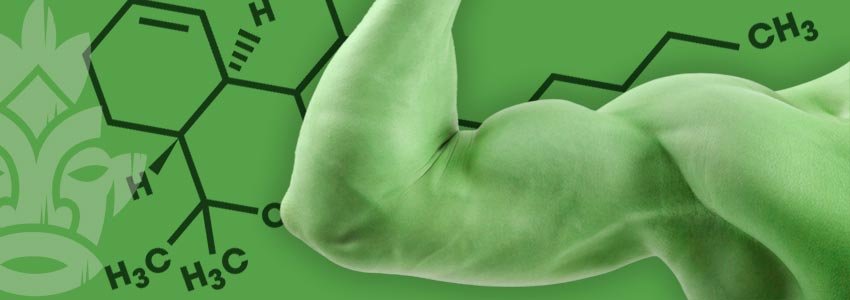
A frequent question that comes up from cannabis users who exercise is; “how will smoking affect muscle growth?” This is a subject that for years has been dominated by pervasive (and unfounded) theories that THC interrupts your ability to make “gains.”
Like the aforementioned, most studies linking cannabinoids and muscle growth were performed on rodents. In one such study, rats given a daily dose of 210mg of THC for two weeks showed inhibition of the mTOR signaling pathway, which can interrupt protein synthesis and therefore, detract from your ability to gain muscle.
At present, this information has no tangible stock in the real lives of people who exercise. The frequency of human double-blinded studies with large samples sizes are few and far between. It’s also worthy of mention that most studies examining muscle growth in the presence of marijuana use THC-rich strains. Some studies even use THC isolates which are less effective than using the entire plant.
THE ENTOURAGE EFFECT
The theory known as “the entourage effect” was first presented by S. Ben-Shabat with help from several other scientists, including the lovingly deemed “grandfather of weed,” Raphael Mechoulam. This entourage effect theory posits that although compounds like THC, CBD and even terpenes maintain diverse, powerful effects by themselves, they are most effective when used in the form of “whole” plant medicines.
In essence, this means that using THC isolates or CBD crystals will lead to skewed results, since most individuals consume cannabis where there is a more developed phytocomplex of the many different cannabinoids and other compounds present.
Nowhere is the entourage effect more evident than in the relationship between THC and CBD. Especially when it comes to muscle growth, the two cannabinoids appear to balance each other out. CBD is oft-cited as a mediator to the intense, sometimes anxiety-inducing highs experienced in excesses of THC. CBD, though not a sleep aid, performs mildly sedative effects that help to calm you down.
CBD has been shown to help in cell regeneration, while also limiting breast cancer cell proliferation. Anecdotally, some researchers suggest that consuming CBD-rich strains before working out can potentially counteract any unsavoury effects produced by THC.
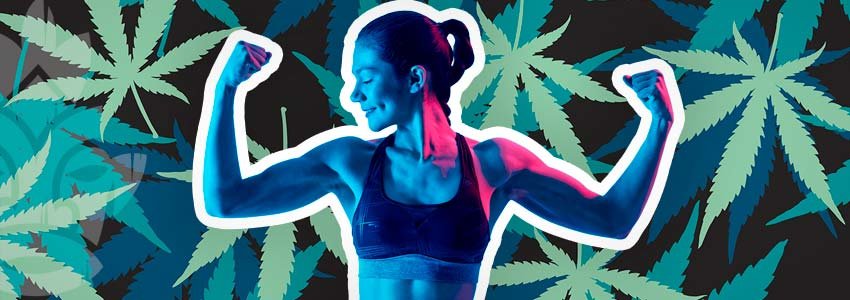
HUMAN HORMONES
A study conducted in 1991 holds precedent as one of the largest human samples detailing the outcomes of THC on hormones in women and men. The study sought to discover whether the cannabinoid affected concentrations of reproductive and stress hormones including testosterone, luteinizing hormone, follicle stimulating hormone, prolactin and cortisol.
In this experiment, a total of 149 subjects (93 men, 56 women) were tested for their hormone values based on frequent, moderate and infrequent use of marijuana. A control group was also used. The findings suggest that chronic marijuana use indicates no hard evidence that cannabinoids alter concentrations of any of the previously mentioned hormones in either gender of any age.
FASTING INSULIN & INSULIN RESISTANCE
Another interesting and more recent study found that consistent cannabis users had 16% lower fasting insulin and 17% lower insulin resistance than non-users. The study, which was published in the American Journal of Medicine was the first of its kind to explore the relationship between cannabis use and fasting insulin, glucose and insulin resistance.
Studies like this are particularly encouraging when backed up by legitimate science and large samples. The study, which was conducted between 2005-2010 on 4657 adult men and women from the National Health and Nutrition Examination Survey was published in 2013 and has yet to reach mainstream audiences.
So, what does this mean for marijuana users and those who enjoy physical exercise? Mostly, it shows that those with predisposed fears of how cannabis could detract from exercise are rooted more in historical hearsay and stigma than in facts.
DOES MARIJUANA BURN FAT?
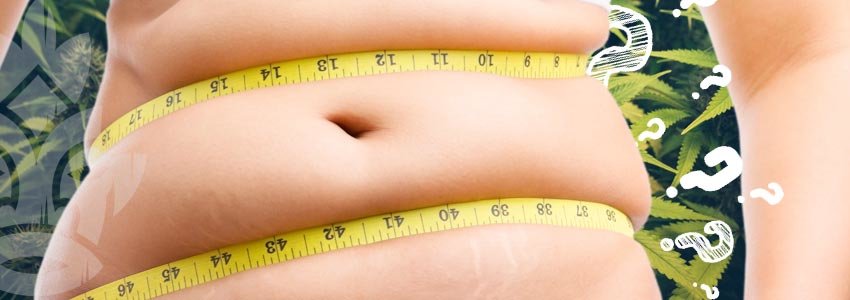
Another area where athletes and novice exercisers alike want answers concerns cannabis’ fat burning potential. Of course, we have all heard the cliche that getting stoned will give you the munchies, which can lead to weight gain. Realistically, regular cannabis users actually have smaller average body mass indexes (BMIs) than non-users across the board.
The above study on insulin revealed that that average weight circumference was also smaller among consumers. While cannabinoids don’t incite unnatural weight gain, there is little peer-reviewed material detailing the ways in which marijuana is helpful for fat loss. Cannabinoids appear in so many different forms that deem some of these preliminary studies to be inconclusive based on too much variation between samples.
For instance, some strains of cannabis spike hunger, which is why they are used in treatments for medical patients going through chemotherapy or those with eating disorders. On the other hand, some strains can actually decrease appetite. The lack of exactness between products, the ineffectiveness of cannabinoid isolates, along with stigmatic resistance from factions of the medical community have all kept cannabinoid research from being normalized.
WORLDWIDE ATHLETICS
The World Anti-Doping Agency (WADA) still considers marijuana to be a banned substance in athletic events. Speculation as to whether marijuana is really a performance-enhancing drug is growing as more professional athletes use cannabis to assist with their training. Indeed, one of the most striking examples of a professional athlete who uses cannabis is Michael Phelps. Phelps is the most decorated Olympic athlete in history at the young age of 31.
Having racked up an astonishing 28 Olympic medals in swimming, Phelps was involved in a worldwide scandal in 2009 when he was caught on film allegedly smoking pot from a bong. After the first chaotic reactions from the media, the incident inspired greater conversation in the sports community on whether marijuana is harmful to athletes.
Some athletes, including ultra-marathon runners, triathletes, UFC fighters and Big Wall rock climbers all use cannabis for myriad purposes pertaining to both physical and mental well-being. Professional athletes are pushed to their limits daily, which is why it’s no surprise that many of them are beginning to “come out” as medical or recreational consumers.
REACTION TIME AND SAFETY
While it is certainly possible to safely use cannabis pre-workout, there are some important precautionary factors to consider. Despite its many benefits to the body, psychoactive marijuana decreases reaction time. This leads to the increased potential for human error, which can be dangerous in a setting where heavy weights or machinery is involved.
After smoking, blood flow to the temporal lobe is significantly reduced and redirected into other parts of the body. This causes a lack of focus that can detract from the efficacy of your exercise. However, many individuals find that cannabis helps them to focus more than they could regularly. In the case of physical practices like yoga, cannabis can be extremely beneficial in helping to deepen the connection between the body and mind. Some users find that in general, marijuana gives them a greater sense of body awareness.
The same can be said for exercise methods like Pilates and other highly aerobic body weight routines. Whether or not smoking weed will help you do a dance routine, however, is up to negotiation. For those of you who are free weight lifters, marijuana can help you to hone in on the activity, so long as it’s not consumed in excess. Impaired performance does not occur significantly in human subjects until ingested in THC concentrations upwards of 100mg.
UNANSWERED QUESTIONS
It is easy to feel dissatisfied with the amount of current research being conducted on marijuana and physical exercise. Although some positive trends are beginning to make themselves clear, many of the studies out there require additional support, review and the inclusion of human subjects before they can be considered factual.
In the meantime, experiment with different strains and consumption methods before and after you work out, to cater the cannabinoids to your specific routine. Every human body is different and all of us react as such when we consume marijuana or exercise. This is due to a number of factors including height, weight, experience and more. As you discover what works best, make sure to record your findings so you can add a breath of fresh air to your next exercise session.




